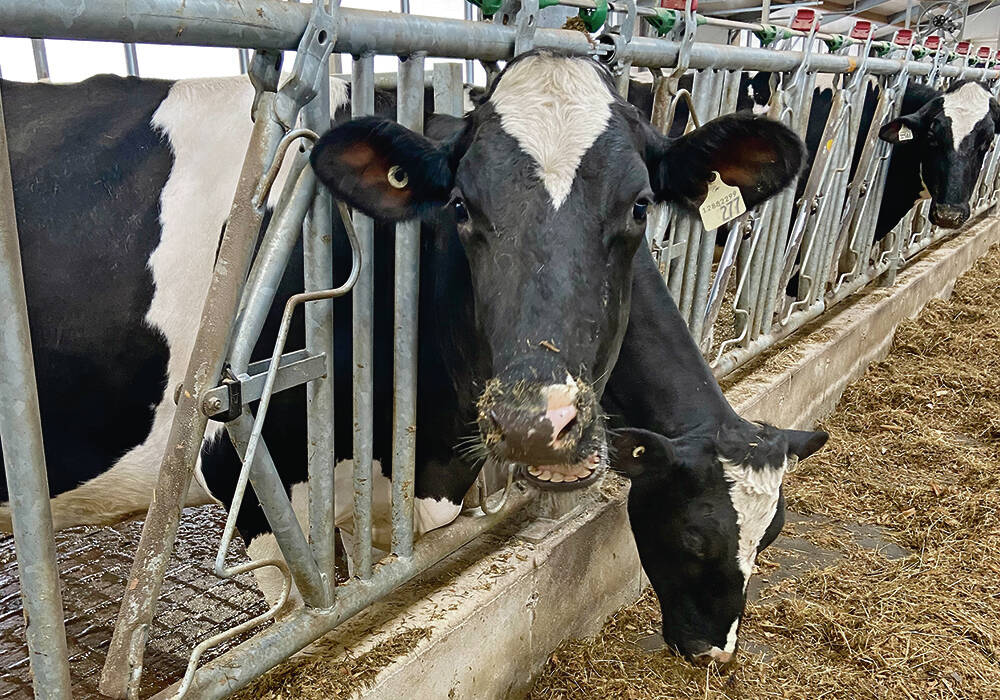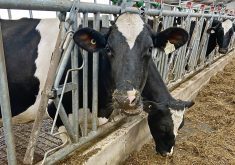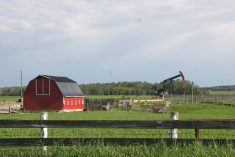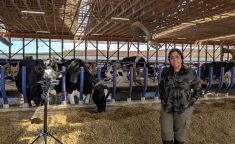The ongoing CDC Triffid saga could end farmers’ practice of saving flax seed from year to year, industry sources say.
Not all the details have been worked out, but the industry, represented by the Flax Council of Canada, is heading toward requiring certified seed, said council president Barry Hall. However, he noted that certified seed will have to be tested for GM flax too.
“It’s our best effort, no-holds barred, to clear this up once and for all,” Hall said.
Read Also

Alberta Milk opens annual hospital fundraiser
Alberta Milk embarks on holiday season campaign to raise money for Alberta Children’s Hospital Foundation
Canadian flax farmers traditionally grow mostly farm-saved seed. But they will instead be expected to grow certified seed that has been tested and found to be free of CDC Triffid, a genetically modified (GM) variety that is contaminating Canadian flax supplies and blocking sales to the European Union (EU).
National Farmers Union (NFU) president Terry Boehm says farmers should be allowed to deliver flax grown from farm-saved seed so long as the seed and subsequent crop tests GM-free, especially since one source of the Triffid contamination is breeder seed from the University of Saskatchewan’s Crop Development Centre.
“Just because it’s certified seed doesn’t guarantee anything,” Boehm said in an interview. “The seed system was the source of the contamination originally.”
Boehm said the seed industry is always looking for ways to force farmers to buy new seed and will use Triffid contamination to that end.
TRACES FOUND
The European Union (EU) found traces of CDC Triffid in shipments of Canadian flax last summer. Although Triffid was approved for release in Canada and the United States, it wasn’t approved in the EU, Canada’s biggest flax market. That’s why CDC Triffid was de-registered and the pedigreed seed recalled and processed before it was sold to farmers to grow commercially.
When traces of Triffid began showing up in Canadian flax, there was speculation some of the seed made it into farmers’ hands. That still might have happened, but some of the spread is due to contamination in the breeder seed of two other Crop Development Centre flax varieties – CDC Normandy and CDC Mons.
Dorothy Murrell, managing director of the University of Saskatchewan’s Crop Development Centre, said testing revealed the contamination, but she doesn’t know how it happened.
Breeder seed is distributed to seed growers who multiply it, eventually selling certified seed to farmers for commercial production. If breeder seed is contaminated, the seed produced from it will be too.
PURITY
Depending on the stage, pedigreed seed is required to be 99.95 to 99.8 per cent pure. But when comes the unapproved presence of GM, any level is intolerable by the EU.
All stocks of pedigreed CDC Normandy and CDC Mons will be pulled off the market, tested for contamination and marketed accordingly. Then both varieties will be de-registered, Murrell said.
CDC Normandy was registered in 1995. It accounted for 14 per cent of the Canadian Grain Commission’s flax harvest samples in 1999, its peak year.
CDC Mons was registered in 2002 and peaked at 0.7 per cent of the samples in 2005.
Since Triffid is widespread at low levels in Canadian flax, Murrell doubts CDC Normandy and CDC Mons are the only sources.
“Dorothy might be right, but I’m hoping she’s wrong because if we can nail it down to two varieties, pull them off the market, pull all the pedigreed seed of that off the EU-destined market and then start to clean up farm-saved seed we might have the problem solved,” said Dale Adolphe, executive director of the Canadian Seed Growers Association.
About 3.5 per cent of the farmer and elevator flax samples tested have been positive for CDC Triffid at or above 0.01 per cent (one seed in 10,000), Quinton Stewart of Viterra told the Saskatchewan Flax Development Commission meeting in Saskatoon Jan. 11.
Ten to 15 per cent of the rail shipments tested positive and seven per cent of the vessel holds.
That’s why Canada’s flax industry, including farmers, must take extraordinary action to remove CDC Triffid and regain the confidence of EU buyers, Richard Wansbutter, Viterra’s vice-president of government and commercial relations, said in an interview.
Farmers can test farm-saved seed, but only growing certified seed, which has also been tested and found to be GM-free, provides better seed management and hopefully a faster resolution to the problem.
“This is not an issue of farmsaved seed versus certified seed.” Wansbutter said. “The issue is, we’ve got a critical situation where we cannot access the European market.”
TESTING KEY
Boehm counters that one year won’t eradicate all traces of CDC Triffid and testing seed, whether certified or farm-saved, as well the harvested product, is the only solution.
“The testing is the critical piece,” Boehm said. “It’s not whether it’s certified or farmsaved, it’s out there now.”
Under the Canada Grain Act licensed elevators are obliged to take delivery of crops farmers want to deliver if they have space, Boehm added.
That’s true, said Canadian Grain Commission spokesman Remi Gosselin, but the act doesn’t say what the company has to pay. Presumably if an elevator only wants to buy flax grown from certified seed it will heavily discount the price of flax that wasn’t.
The problems created by CDC Triffid illustrate seed developers need to be concerned about disrupting markets, Boehm said. “The long and the short of it is once the genie is out of the bottle you can’t contain it.” [email protected]














